Any golfer will tell you the game is rarely a walk in the park. But in Scotland’s capital, it has always been exactly that.
Nearly every visitor to Edinburgh sees the famous castle at the end of The Royal Mile. The 11th century architectural wonder is hard to miss, perched on volcanic rock in the center of the city. In its shadow to the south is an open area of grass densely bordered by coffee shops, bars and four-story residences. Think New York’s Central Park. Tens of thousands of people walk through this area every day. Yet most are unaware of the Bruntsfield Short Hole Course here, and its rare history.
“I’m not the story, the story is out there,” says Jimmy Robertson, pointing across the rumpled 30 acres dotted with 36 small, tightly-cut greens. Jimmy is to the Bruntsfield Short Hole Golf Course what Old Tom was to the Old Course: The keeper of the greens. “All this history and all this development but golf is still played here,” Jimmy says. “Other than a couple of the greens moving over the years, it hasn’t changed since the early days. It sounds cliché but playing here is like taking a wee walk back in time.”
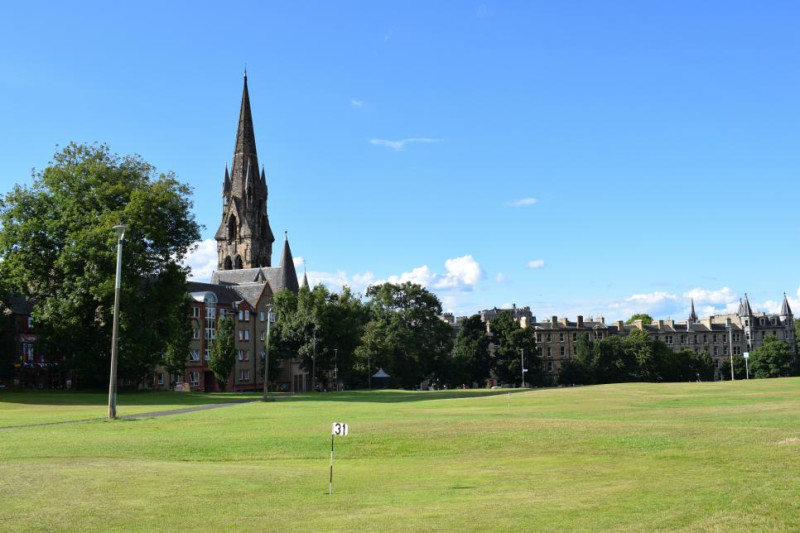
Hole No. 31. All photos by Jamie Kennedy
Like his father before him, Jimmy volunteers. Along with much else, he marks the small, rectangular teeing areas, creates the three-foot metal pins, runs a small club of golfers that are members, chases away university students set on barbequing and hounds the local council for support. Despite all that, his email signature just reads “Jimmy… Vice Captain, Bruntsfield Short Hole Golf Club.”
The green shed where I meet Jimmy was previously used as a “cabbies’ hut” in the 1920s for horse-drawn carriages. Jimmy has the only key. The single room inside is draped in golf-related tools and artefacts. Balls, scorecards, metal signs, hole-cutting tools and a bucket of old clubs. It’s a fascinating, yet stale-smelling headquarters.
The first mention of golf being played here dates to 1695. The local council granted part of the links to be rented for use as sandstone quarries, with the rented acreage to “always being at ane distance from the place where the neighbors play at Goulf.” About 50 years later, a local family bought land alongside the links and applied to build on it. They were granted permission but only as long as the development could in no degree “be hurtful to the Exercise and Diversion of the Golff."
Although the spelling of the game changed over the years, the activity of playing these links never did. In the 1800s, two local societies used the grounds: The Burgess, founded in 1735, and Bruntsfield, founded in 1761. Both clubs later moved out of the city in the 1870s and then again to their current locations, side by side, in the northwest corner of Edinburgh. Thus in 1890, the Short Hole course was established. The layout changed from six full holes to a 36-hole layout of shorties ranging from 40 to 90 yards. Every green, all of which are roughly 500 square feet, boasts one of the iconic metal pins with a painted hole number. The course weaves back and forth through the public land, playing out towards the backdrop of Arthur’s Seat, another extinct volcano and hill near the center of Edinburgh, and returning to a green outside The Golf Tavern, one of Scotland’s oldest existing pubs.
“Historians know about this place, but most regular players don’t have a clue,”
As players add up their score and head for a pint at the, well, 37th hole, they can be excused for missing a small, circular blue sign on an adjacent dormitory building. Twenty feet up is a placard that reads, “On this site stood Golfhall, built 1717, the world’s first golf clubhouse.”
“Historians know about this place, but most regular players don’t have a clue,” Jimmy says. “There’s a few signs and bits of information around, but most people think it’s just a park. I was in Florida a few years ago and I went to the World Golf of Fame [since relocated to Pinehurst, NC]. I came out of the lift into the museum and there was a huge picture of a painting of the Bruntsfield Links, done in the late 1700s.”
The course is free to play for the public. Members of the Bruntsfield Short Hole Golf Club gather to play weekly competitions.
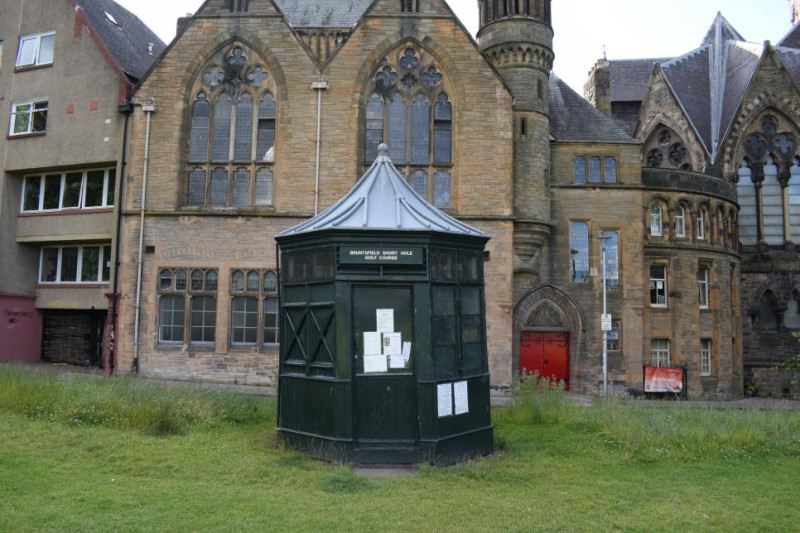
The starter shed from which Jimmy Robertson governs the Bruntsfield Short Hole Course.
“Aye, there’s about 40 or 50 of us in the club. A few that don’t play anymore but still like to be members and help support the course,” Jimmy says. “In the summer, we have weekly competitions on Tuesdays or Thursdays and usually head to the pub after.”
And what does membership to one of the world’s oldest links cost?
“It’s twenty pounds to join. That’s for a year,’ Jimmy says. “And it’s five for the juniors.”
More From Golf Digest
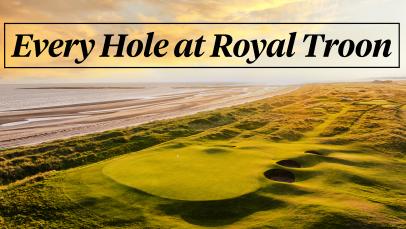 Every Hole at Royal Troon Golf Club
Every Hole at Royal Troon Golf Club
16:05
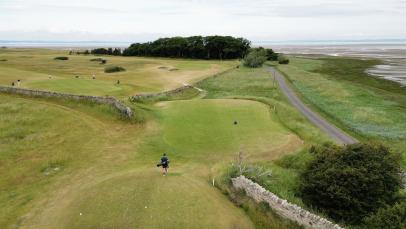 Letter from Europe
18 holes, 18 courses, 17-plus hours, 49 miles walked—and an outrageous golf dream fulfilled
Letter from Europe
18 holes, 18 courses, 17-plus hours, 49 miles walked—and an outrageous golf dream fulfilled
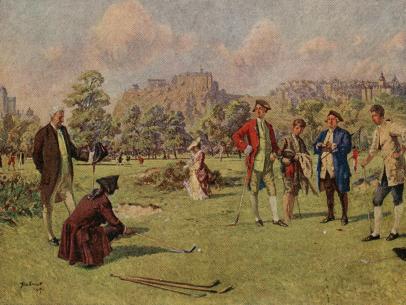 local knowledge
Is golf really Scottish?
local knowledge
Is golf really Scottish?
A footnote: I first played the Bruntsfield Short Hole Golf Course when I was seven. Dressed in my dad’s Maxfli visor to channel my childhood-hero, Fred Couples, it was my first competitive round of golf. I shot 171, which was 63 over par for the 36-hole par three course and I finished third for my age group. I was hooked.
And now I’m a new member. Along with access to the competitions and post-round tales over pints, soon I’ll get my very own Short Hole handicap.
“It’s funny, lots of players that have low handicaps on traditional courses struggle around here. And the same vice-versa, guys that don’t have the length for a longer course but have a decent short game can do really well.”
Without diving into the weeds of Jimmy’s unique handicapping system, handicaps are adjusted by half a stroke for every shot a player’s net score is below the par of 108. If that net score is over par, that player’s handicap is increased by 0.1 for each shot with a limit of one full shot per round.
The first mention of golf being played here dates to 1695.
Paul Middleton is a member who lives near the course and caddies 20 miles away at Muirfield. As well as being a long-time member of the club, he is also the course record holder.
“Yeah, I shot 90,” Paul told me, modestly. “It was all twos and threes. Eighteen twos and 18 threes, no bogeys. I had shot 92 two or three times before.”
As I pictured the purity of a scorecard with only twos and threes, I asked Paul if he had a handicap at the club.
“I think I’m plus 10. The lowest was after the course record, I got to plus 14, but I’ve come up since then."
Told he may have been the lowest handicap-golfer anywhere in the world, he didn’t bite. As for aces? “I’ve lost count, to be honest. I probably made about half a dozen a season there when I was playing quite a bit. Now, it’s more like one or two. There’s no shortage of ones out there.
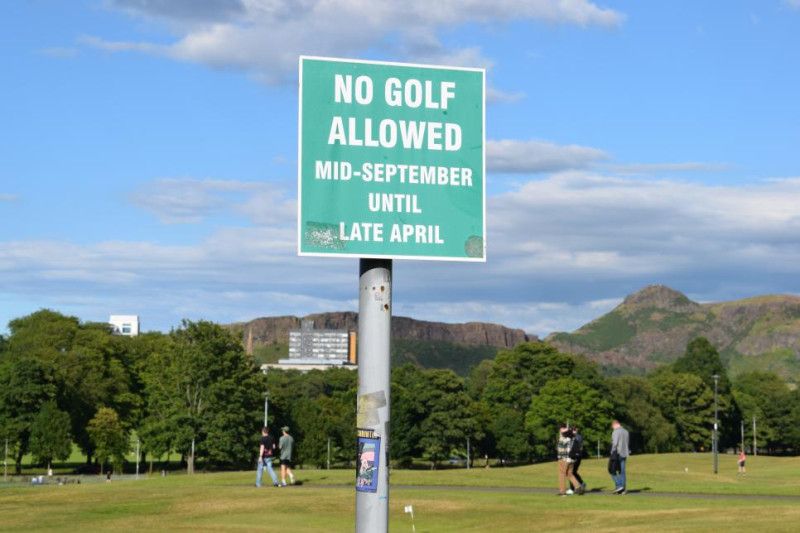
As with most public parks, the grounds are governed by appeals to common sense.
Paul and Jimmy symbolize exactly what it is that makes Bruntsfield Short Hole Golf Course so special: understated, overlooked, modest and perhaps a little rough around the edges. I recommend it to anyone visiting Scotland’s capital that has even the slightest interest in the game. For five pounds, you can rent a couple of clubs and balls from the Golf Tavern, the site of the oldest golf clubhouse, and enjoy a local pint after 36 holes. You’ll leave with a scorecard for a souvenir and a story to tell.
It may be hidden in plain sight, but I doubt there’s better value anywhere in the world.